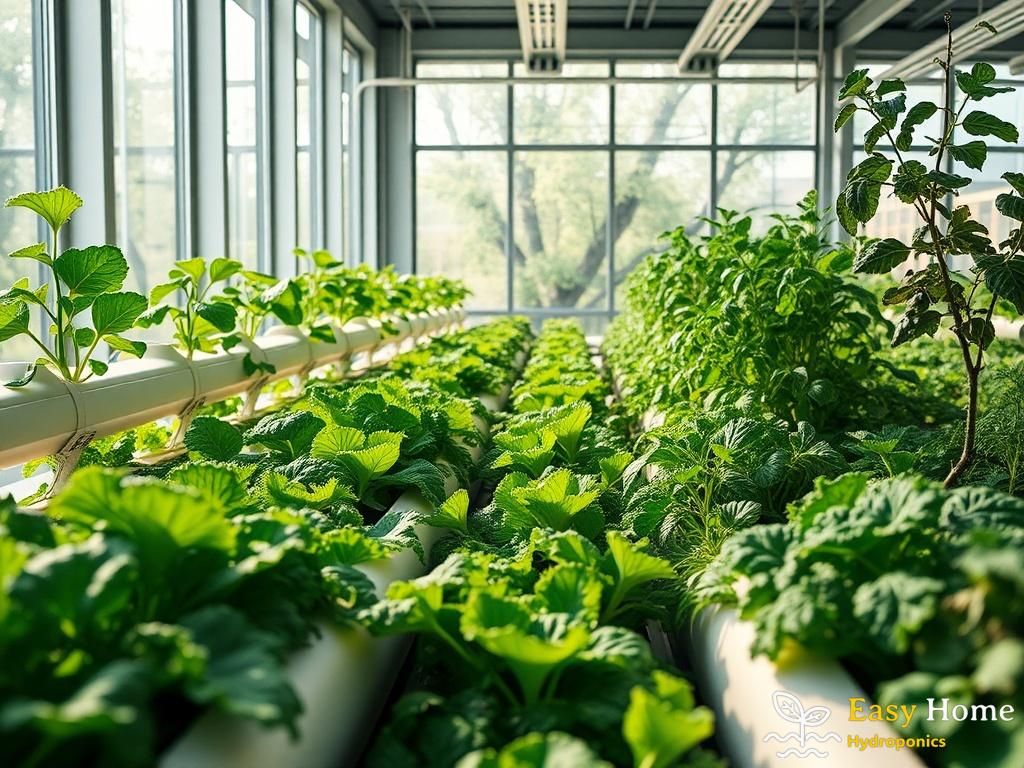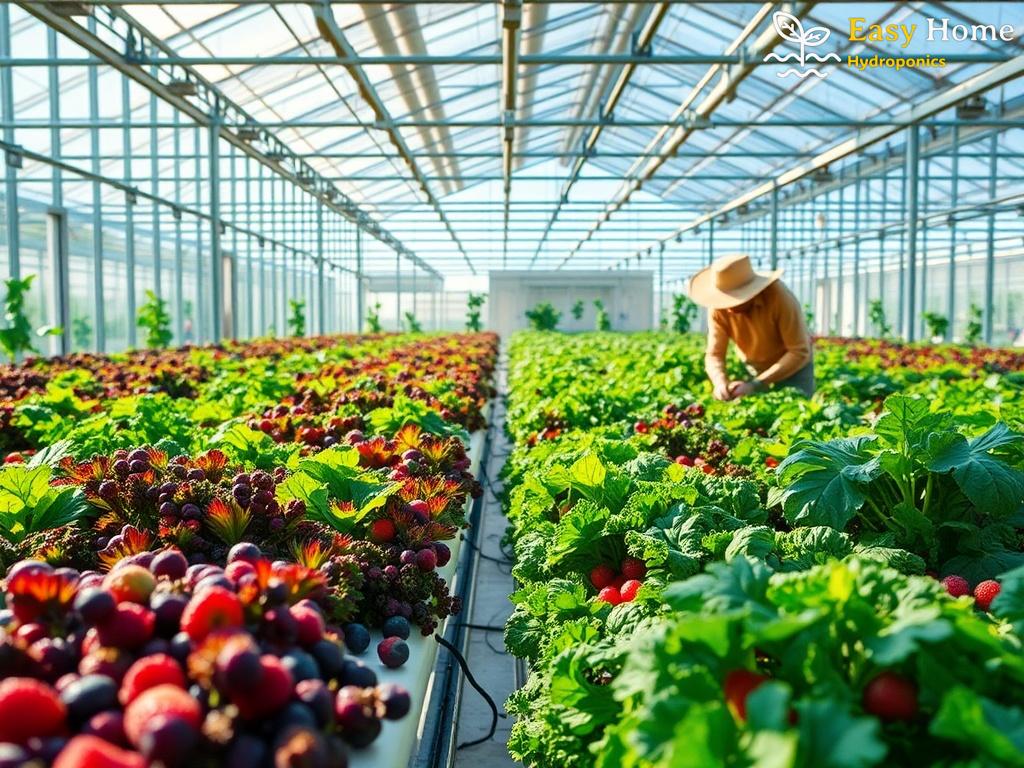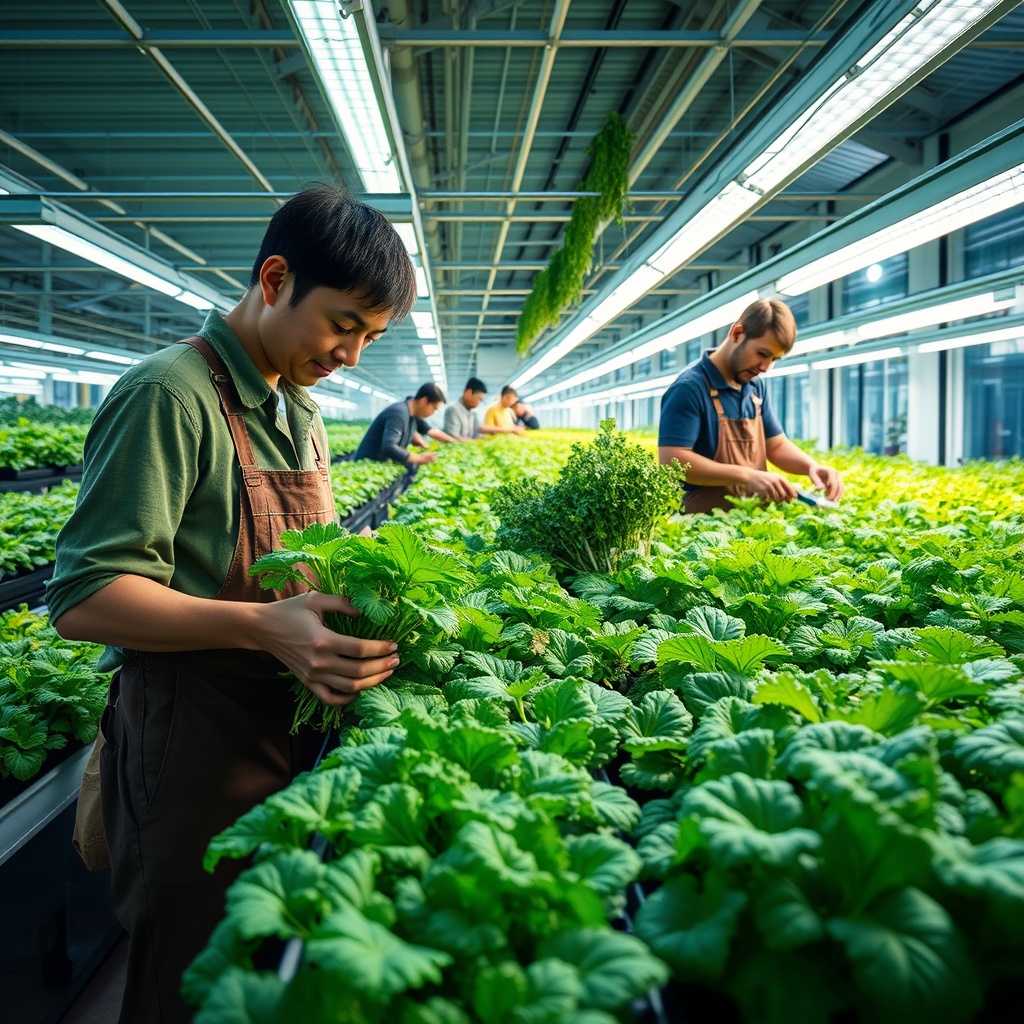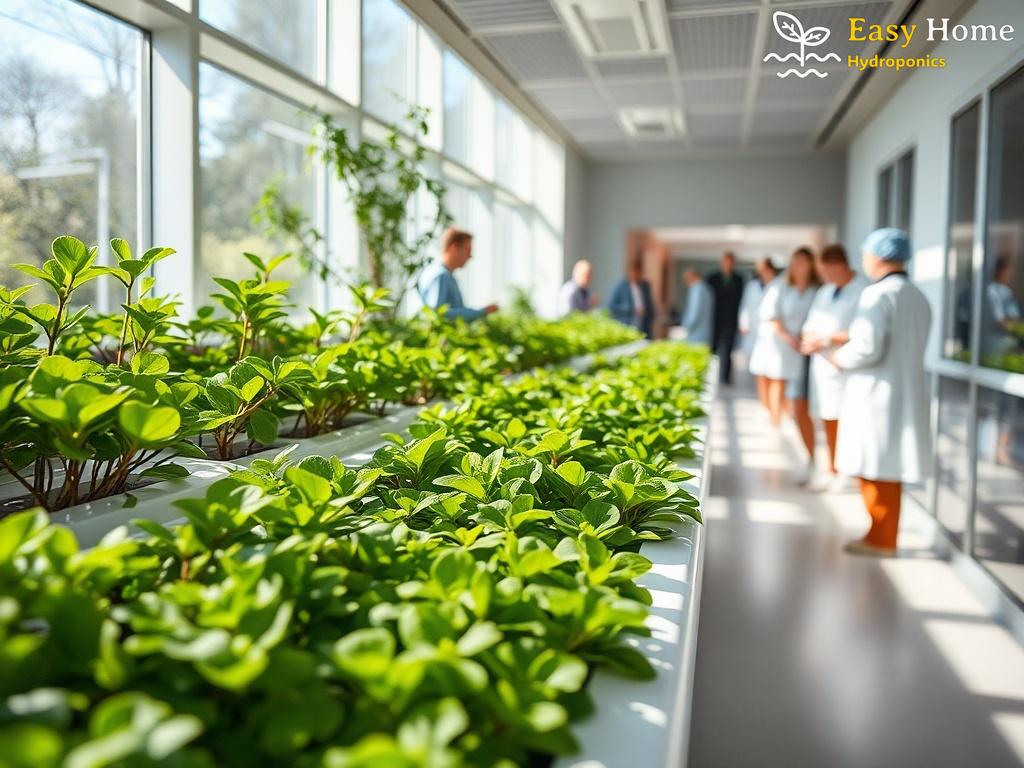Rise of Hydroponic Superfoods in the Functional Foods Market

The Intersection of Innovation and Nutrition
The contemporary food landscape is undergoing a radical transformation, driven by consumer awareness and a growing preference for health-oriented choices. Among these trends, functional foods have emerged as a beacon of innovation, offering not only basic nutrition but also health benefits beyond traditional dietary standards. This surge in demand for functional foods has prompted a parallel rise in hydroponic superfoods, which are cultivated using advanced agricultural techniques that promise enhanced nutritional profiles and sustainability.
A Nutritional Powerhouse: The Benefits of Hydroponic Superfoods
Hydroponic superfoods, including nutrient-dense greens and vibrant berries, are gaining traction not just for their taste but for their impressive health benefits. These foods are cultivated in controlled environments, allowing for higher concentrations of vitamins, minerals, and antioxidants. As consumers become increasingly health-conscious, the appeal of hydroponic superfoods lies in their ability to deliver nutritional punch while minimizing harmful pesticides and environmental impact.
Here’s a brief overview of the key benefits of hydroponic superfoods:
- Enhanced Nutritional Value: Hydroponic methods can yield crops with higher levels of essential nutrients.
- Sustainability: These systems use less water and land, making them a more environmentally friendly option.
- Year-Round Availability: Hydroponics allows for continuous production, ensuring fresh produce regardless of the season.
- Reduced Chemical Use: Many hydroponic farms operate with organic methods, providing cleaner options for consumers.
Market Trends and Consumer Preferences
The rise of hydroponic superfoods is not just a passing fad; it reflects a deeper shift in consumer preferences towards sustainable and health-oriented eating habits. Recent studies indicate that nearly 70% of consumers are actively seeking functional foods, with a significant portion expressing interest in hydroponically grown options. As the market expands, brands are innovating to meet these demands, introducing new products that combine convenience with health benefits.
| Trend | Consumer Preference | Market Response |
|---|---|---|
| Health Consciousness | Increased demand for nutrient-rich foods | Launch of new hydroponic superfood brands |
| Sustainability | Preference for eco-friendly products | Growth in organic hydroponic systems |
| Convenience | Desire for easy-to-prepare meals | Development of ready-to-eat hydroponic options |
Consumer Awareness: Driving Hydroponic Trends
The evolution of consumer preferences toward health and sustainability is reshaping the marketplace in remarkable ways. As individuals become more informed about the nutritional value of their food, a significant shift is occurring—a shift that is not only impacting what we eat but also how we grow it. This heightened consumer awareness is catalyzing the demand for hydroponic superfoods, which are increasingly recognized as a viable solution to modern dietary challenges.
In recent years, consumers have become more discerning about their food choices. They are increasingly seeking out products that are not only nutritious but also produced in a manner that aligns with their values. This growing consciousness about food sourcing has made hydroponically grown superfoods a popular choice. The appeal lies in their ability to deliver maximum nutrition while minimizing the negative impacts associated with traditional farming practices, such as pesticide use and excessive water consumption.
The Rise of Informed Eating
With the proliferation of information available at our fingertips, consumers are more equipped than ever to make informed dietary decisions. The internet, social media, and various health platforms have played an instrumental role in spreading knowledge about the benefits of functional foods. Consumers are beginning to understand that hydroponic superfoods, often rich in essential nutrients and antioxidants, can play a pivotal role in their overall health and well-being. The continuous education on health benefits has led to an increased interest in these innovative food sources.
A Shift Toward Sustainability
As awareness of environmental issues grows, so too does the consumer preference for sustainable food options. Hydroponic farming, known for its ability to produce crops with significantly less water and land, is emerging as a frontrunner in the race for eco-friendly food production. Consumers appreciate the fact that hydroponic systems can yield fresh produce year-round without the extensive environmental footprint of traditional agriculture. The appeal of these methods not only aligns with health considerations but also with a broader commitment to environmental stewardship.
In summary, the burgeoning trend of functional foods is intricately tied to an increase in consumer awareness. As people seek to enrich their diets with nutrient-dense, sustainably grown options, hydroponic superfoods stand out as a key player. This shift in preferences is not merely a trend; it is a movement toward a healthier, more sustainable future. The convergence of health consciousness and environmental responsibility is setting the stage for a revolution in how we perceive and consume food.
Nutritional Benefits: Hydroponics vs. Traditional Farming
As the quest for superior nutrition continues to escalate among health-conscious consumers, the debate between hydroponics and traditional farming has taken center stage. With a growing number of individuals seeking foods that not only satisfy hunger but also enhance well-being, understanding the nutritional benefits of hydroponic superfoods compared to their traditionally farmed counterparts becomes essential. This comparison sheds light on why more consumers are gravitating towards hydroponically grown options.
Understanding Nutritional Superiority
Hydroponic systems are designed to optimize growing conditions, allowing plants to absorb nutrients more efficiently than those in soil. This results in produce that is not only fresher but also richer in essential nutrients. The advantages of hydroponic farming over traditional methods can be illustrated through a detailed comparison:
- Enhanced Nutrient Absorption: Hydroponic plants receive nutrients directly through the water solution, which can lead to higher concentrations of vitamins and minerals.
- Reduced Contaminants: The controlled environment of hydroponics minimizes exposure to harmful pesticides and pathogens, delivering cleaner produce to consumers.
- Consistent Quality: Hydroponic farming ensures uniformity in size and taste, leading to a more reliable product for consumers.
- Faster Growth Rates: Plants grown hydroponically often mature more quickly, which not only boosts yield but also ensures fresher produce on store shelves.
- Environmental Efficiency: Hydroponics uses significantly less water and land space compared to traditional farming, making it a more sustainable choice for future food production.
From Farm to Table: The Nutritional Journey
The journey of food from farm to table greatly influences its nutritional profile. Hydroponically grown superfoods can reach consumers faster due to their proximity to urban markets, ensuring peak freshness and nutrient retention. This contrasts sharply with traditional farming, where produce may spend days in transit, leading to nutrient degradation. Moreover, the controlled conditions of hydroponics allow for year-round cultivation, ensuring that nutrient-rich foods are available regardless of seasonality.
As consumers become more educated about the nutritional benefits associated with food sourcing methods, the appeal of hydroponic superfoods only intensifies. It is clear that the functional foods trend is not just a fleeting consumer fad; it represents a significant shift in how we value food quality, sustainability, and health.
Sustainability: The Eco-Friendly Appeal of Hydroponic Superfoods
The sustainable food movement is more than just a trend; it represents a profound shift in how consumers approach their diets and the environmental implications of food production. As awareness of climate change, water scarcity, and ecological degradation continues to rise, the demand for eco-friendly food sources like hydroponic superfoods has surged. These innovative agricultural practices not only meet the nutritional needs of today’s health-conscious consumers but also align with their values regarding environmental stewardship.
Hydroponics: A Sustainable Solution
Hydroponic systems are at the forefront of sustainable agriculture, showcasing a myriad of benefits that traditional farming cannot match. By cultivating plants without soil, hydroponics utilizes nutrient-rich water solutions, resulting in significantly less resource consumption. This eco-friendly approach is particularly appealing to those who prioritize sustainability in their food choices.
Resource Efficiency and Reduced Footprint
One of the standout features of hydroponic farming is its ability to produce food using minimal resources. The following points illustrate how hydroponics contributes to a more sustainable food system:
- Water Conservation: Hydroponic systems can use up to 90% less water than traditional farming methods, making them a critical solution in areas facing water shortages.
- Space Efficiency: Hydroponics allows for vertical farming and high-density planting, which can lead to higher yields per square foot compared to conventional farms.
- Reduced Pesticide Use: The controlled environment of hydroponics minimizes the need for synthetic pesticides, resulting in cleaner produce.
- Lower Carbon Footprint: By growing food closer to urban centers, hydroponics reduces transportation emissions associated with delivering food from rural farms.
Consumer Appeal: Aligning with Values
As consumers increasingly seek products that resonate with their ethical beliefs, the demand for hydroponic superfoods continues to rise. Shoppers today are not only looking for nutritious options but also for those that contribute positively to the environment. Hydroponic superfoods fulfill this dual requirement, offering a guilt-free choice that promotes health while championing sustainability.
This growing alignment between consumer values and the benefits of hydroponic farming signifies a transformative moment in the food industry. Companies that embrace hydroponics can position themselves as leaders in the functional foods market, appealing to a demographic that prioritizes both health and sustainability.
Future Forecast: Trends Shaping Hydroponic Food Demand
As we look ahead, the intersection of functional foods and hydroponic superfoods reveals an exciting landscape filled with innovation and opportunity. With the increasing consumer appetite for health-focused options, the demand for hydroponically grown produce is anticipated to surge. This evolution is not merely a response to current trends but a reflection of a deeper consumer awareness that prioritizes health, sustainability, and convenience.
Emerging Technologies and Consumer Engagement are set to redefine how hydroponic superfoods are produced and marketed. As advancements in agricultural technology continue to unfold, we can expect to see an integration of smart farming techniques. This includes the use of sensors and data analytics to optimize growth conditions, ensuring that crops are not only healthier but also more flavorful. Moreover, brands are increasingly leveraging social media to engage consumers, sharing stories about their sustainable practices and the nutritional benefits of hydroponics. This creates a strong narrative that resonates with health-conscious shoppers.
The Rise of Personalization in Food Choices will also play a pivotal role in shaping the future of hydroponic superfood demand. As consumers become more educated about their dietary needs, they are seeking products that cater specifically to their health goals. Hydroponic superfoods, with their customizable growth conditions, can be tailored to deliver specific nutrients that align with individual preferences, such as higher antioxidant levels or lower glycemic indices. This level of personalization not only enhances the appeal of hydroponic foods but also positions brands as responsive to consumer needs.
Market Expansion and Global Awareness of hydroponic superfoods is set to broaden as well, with more consumers around the world becoming aware of the benefits of these innovative products. As urbanization continues to rise, cities will increasingly turn to hydroponic systems to meet their food needs sustainably. This will lead to a proliferation of hydroponic farms in urban areas, making fresh, nutrient-dense superfoods more accessible to consumers who prioritize health and sustainability.
In essence, the future of hydroponic superfood demand is intertwined with the functional foods trend. As technological advancements, consumer engagement, personalization, and global awareness continue to shape the landscape, we can anticipate a robust growth trajectory for hydroponic superfoods that not only satisfies the health-conscious consumer but also supports a sustainable future.




